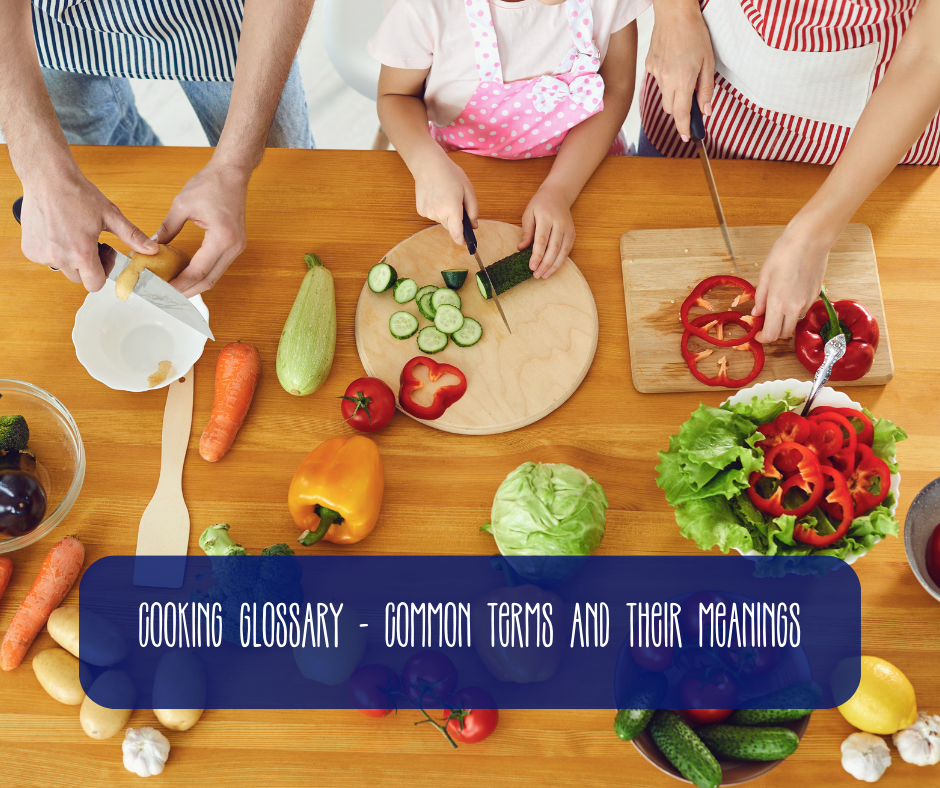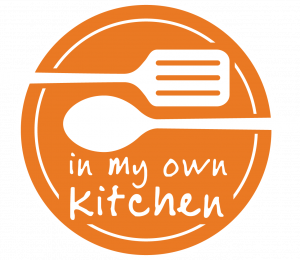
Cooking Glossary
Reading a recipe and have no idea what the instructions mean?
Wish there was a quick guide to give you the insight you need? You’re in luck! Read on below for my glossary of cooking terms and how they apply in your favourite recipe
Al Dente – Italian meaning “to the tooth” . Pasta readiness is often described as being ‘al dente’ implying a bite that has some resistance
Baste – To pour cooking juices or melted fat over meat or other food while cooking to keep it moist. Often the basting liquid is found in the bottom of the baking dish though you may use surplus liquid or fat to baste
Blanch – To plunge food into boiling water, removing quickly, then plunging into iced water to halt the cooking process. This usually refes to fruit and vegetables. This either serves to keep vegetables green or bright in colour, or in the case of stone fruits or tomatoes, to easily peel the skin
Braising – A low heat, slow combination-cooking method. You first sear the protein and vegetables at a high temperature, then create a sauce/broth and transfer to an oven dish, covering and cooking at a low heat until tender.
Deglaze – To remove and dissolve the browned food residue, or “glaze”, from a pan. This is done to flavour sauces, soups, and gravies. Wine or cooking alcohol is often used to complete this process though water or stock may also be used.
Beat – Quickly stirring or mixing ingredients in a circular motion with a utensil, mixer, or whisk until combined. This technique is used to either incorporate air into a mix such as beating egg whites and/or to ensure a mixture is well combined such as a cake batter.
Fold – Combining light and heavy ingredients, like whipped cream and flour, by stirring the mixture from bottom to top with an under and over movement. This ensures any air isn’t knocked out and the ingredients mix evenly.
Parboil – Partially cooking food by boiling it, in preparation for another cooking technique. For example you may parboil potatoes before roasting or parboil asparagus before grilling.
Score – Making shallow incisions near the surface of a food. Reasons for scoring may be – crispier outer edge such as roast pork skin, easier flavour absorption for marinating, decoration of bread loaves.
Skim – Getting rid of fat from the surface of a liquid. This is commonly done with stocks but can also be done with stews or casseroles.
Sweat – Gently cooking vegetables in a little oil, with frequent stirring and turning to ensure emitted liquid will evaporate; usually results in tender and for onions, translucent pieces.
Steep – To allow dry ingredients to soak in a liquid until the liquid takes on its flavour, often referring to coffee, tea, or spices.
Sear – A technique used in grilling, baking, or sautéing in which the surface of the food is cooked at high temperature until a crust forms. This step is also often used in the process of slow cooking or braising and from which the pan can be deglazed for the sauce and creates a more appealing appearance.
Reduce – To heat a sauce or stock to allow evaporation of liquids and in turn reduce the overall volume. This technique concentrates the flavours and thickens the consistency. If you add to much liquid to the cooking process, reducing can create the correct result.
Grease – To coat the bottom and sides of a pan with oil spray or butter. This is used on cake pans and trays to assists with the easy and complete release of the cooked cake. After greasing sometimes cake tins can be lined with parchment paper for extra non stick assurance.
Cream – To combine sugar and fat into a homogenous mixture. This is often done with an electric beater as part of cake batters or icings. The mixture becomes lighter as more air is incorporate
Whisk – To beat food by hand with a light whipping motion. You may whisk eggs for scrambled eggs or egg wash or the technique may be used to combine ingredients.
Steam – To cook foods in a basket or special saucepan over simmering liquid with a lid covering. Common foods for steaming are vegetables, fish, rice, eggs and dumplings.
Simmer – To gently cook food in liquid that is just below boiling point. You can also cook soups or sauces at a simmer to gently infuse flavours and prevent burning.


